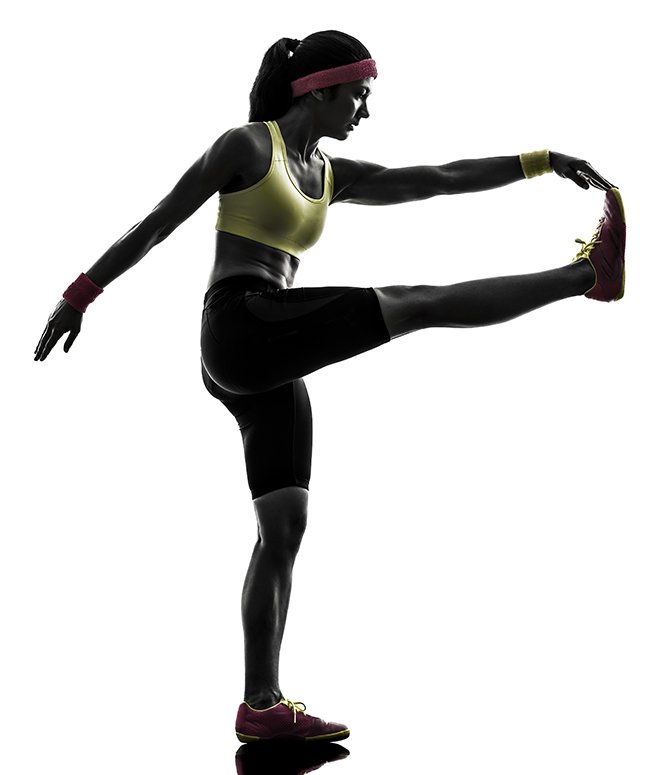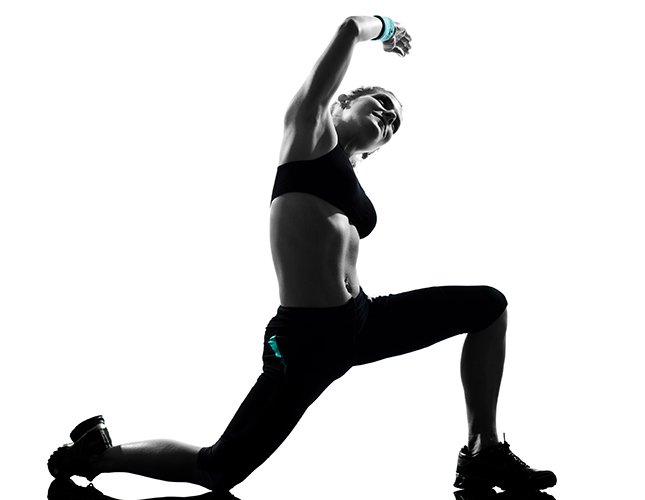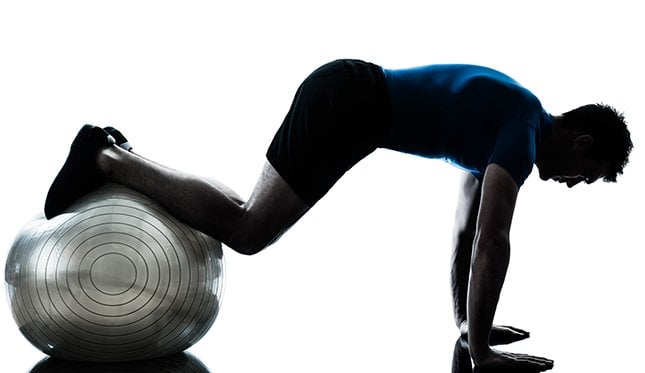Most of my patients squeeze exercise into the time they have between family and work commitments. We’ve all seen them: The middle-aged guys and gals pedaling hard on the stationary bike at 5:30 a.m. and done by 6:00. While I love to see people exercising regularly, these folks could learn a lesson from elite athletes and lay off the purely cardio regime. Focusing only on cardio and neglecting flexibility, balance and muscle recovery leads to injuries.
Elite athletes prioritize injury prevention as much as overall fitness, and they address injuries at the first sign of trouble, since an injury that leads to a major operation like a knee replacement can derail all exercise for months. Elite athletes have three strategies to stay in top form: deliberate recovery practices like post-workout cold water immersion (CWI); flexibility and balance training; and using stem cells for orthopedic injuries.

The primary technique that differentiates elite athletes from gym rats is the former’s focus on optimizing muscle recovery. One of the most common recovery practices is post-workout CWI, which consists of immersing limbs or your entire body in 45- to 60-degree water. The theory is that cooling fatigued muscles causes blood vessels to constrict, expelling lactic acid and other waste products faster and thus speeding recovery. This theory is grounded in science and looks promising. One study of jiu-jitsu athletes showed that CWI lowered perceived muscle soreness, raised perceived muscle recovery and lowered levels of LDH, an enzyme correlated with muscle fatigue.

Elite athletes know that reducing fatigue, soreness and stiffness will help them get more out of their next training session and increase their competitive success. A key part of reducing soreness and stiffness is incorporating flexibility and balance exercises into their training. All muscles extend and contract, and well-balanced muscles can stretch and tighten equally well. Many injuries occur when muscles become imbalanced. Ballet dancers, for example, often injure their hips because their pelvic muscles are so flexible that they lose the stability that protects them during advanced movements. Soccer players injure their ACLs (knee-stabilizing ligaments) because their hamstrings become so tight from running that their range of motion is limited.
Balance is closely related to flexibility. Just think about how much easier it is to stay stable while squatting on a swaying stability ball when your legs and hips can move freely. In one study from Victoria University in Australia, balance training—which consists of strengthening exercises on unstable surfaces—was shown to “significantly reduce the recurrence of ankle ligament injuries in soccer, volleyball and recreational athletes.”

Together, flexibility and balance protect your joints and muscles from injuries and tears. Incorporating both into a training program is key to peak performance. “Dynamic” exercises, or exercises that use multiple muscle groups, like lunges with a torso twist, can build balance and flexibility along with strength. Static stretches, where you hold a limb still in a position that extends a muscle, do increase blood flow, but should be done carefully and after warm-ups and workouts to avoid overstretching.

In addition to preventing injuries, elite athletes are also proactive when it comes to treating the ones that do happen. My patients will often hesitate before calling me about knee or ankle pain, hoping it will go away on its own. The bad news: It almost never does. Elite athletes know that an unexpected rest day is worth it to prevent a more severe injury that will cost months of training time.
Another important tool for elite athletes is stem cell therapy. With today’s technology, stem cells can be collected from a patient’s own fat, extracted and concentrated, injected at the site of an injury or surgery and then monitored as they build new cartilage or other tissues. The Hospital for Special Surgery, a leading orthopedic center in New York that cares for many professional athletes, has a robust stem cell program. HSS doctors have used stem cells as both a primary treatment and as surgical adjuncts to speed the healing process. Stem cell therapy is an especially good option for arthritis and other age-driven joint issues.
Everyone can learn from the emerging ways that elite athletes are optimizing performance by focusing on recovery and injury treatment. The bottom line: Take a holistic approach and your workouts will be safer, healthier and more robust.
The Techniques of Elite Athletes
- Try using the cold plunge after your workout. If your gym doesn’t have one, you can make your own ice bath at home. Use it for up to 6 minutes. Do not force yourself to stay in the water longer, since doing so could lower your body temperature to dangerous levels.
- Work with a trainer to do exercises that incorporate multiple muscle groups as well as a range of motion. It’s easy to get stuck in a rut, and to prevent injuries it’s important to use muscles in new ways. Work on flexibility and balance just as you work on strength and cardiovascular fitness.
- Treat small injuries before they escalate. Prioritize rest, and keep stem cell therapy in mind as an option for both treatment and surgery recovery. If your doctor doesn’t offer it or know a specialist who does, don’t be afraid to seek out other resources.











